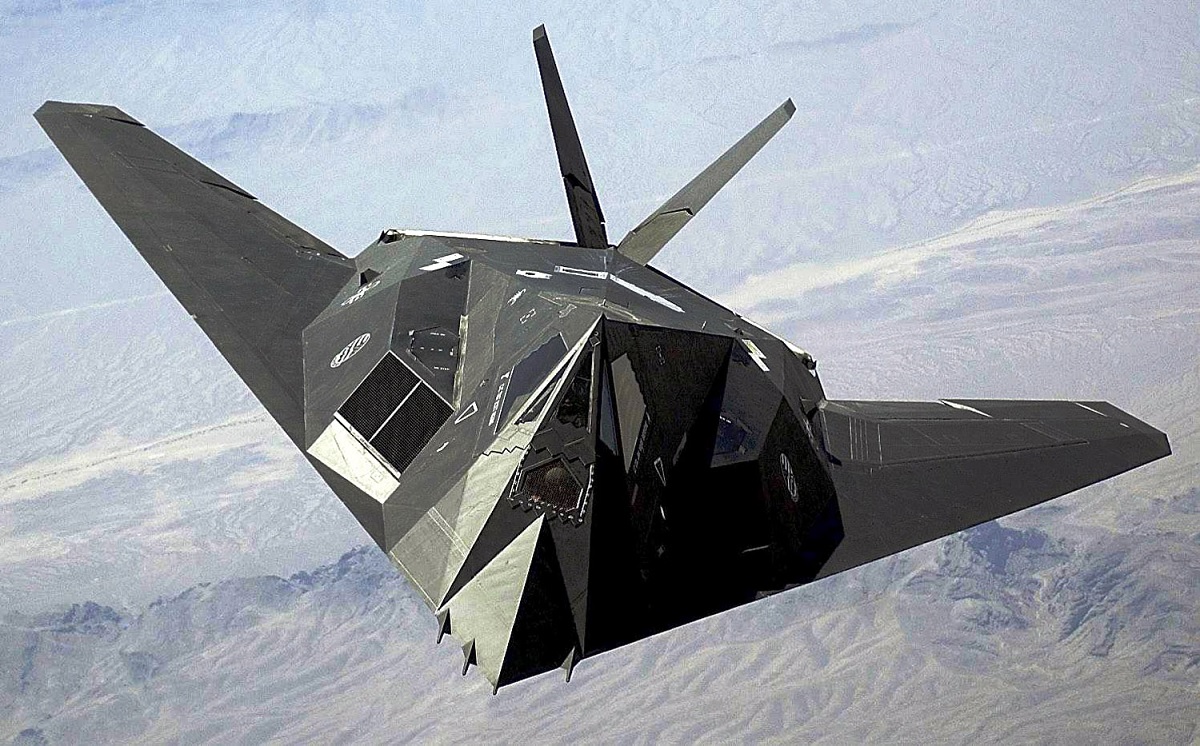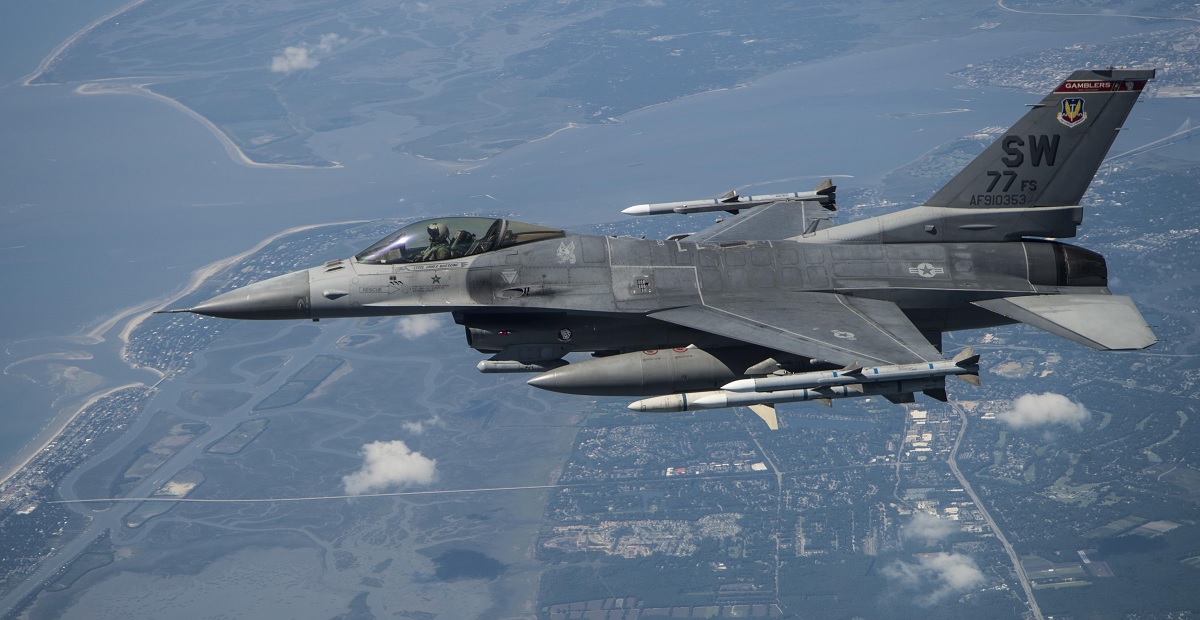“I came out of the AOR, contacted the appropriate agency, and said, ‘Copy. You’re going to support ‘Ram 01′.’ That’s all I got. Who’s ‘Ram 01!?’,” Capt Paul Carlton 55th FS F-16 pilot
For more than ten years, the F-16, also known as Viper by her pilots, has been the most productive fighter in American and Coalition operations in the Middle East. It has been the workhorse of U.N.-sanctioned operations in the area since the 1991 Gulf War, performing in “Wild Weasel,” “ground attack,” and “air superiority” roles.
Over a decade-long period, Operations Southern Watch and Northern Watch necessitated daily and ongoing combat patrols over Iraqi territory; this work was made easier by the abundance of F-16s available in the U.S. Air Force (USAF) service, as well as the jet’s historical capacity for a variety of functions and applications.
The following narrative, which is from the book F-16 Fighting Falcon Units of Operation Iraqi Freedom by Steve Davies and Doug Dildy, tells what happened when the U.S. in an effort to locate, identify and destroy Iraq’s extensive air defense system, President George W. Bush sent his forces into Iraq in March 2003. The F-16CJ was the second aircraft to enter enemy airspace during this operation.
“On 19/20 March we were flying on-call SEAD and had HARMs on board the airplane. I was a night guy, flying only at night, and it was early in the morning. I had one more vul to cover before I went home. We were covering six-hour vul times (vulnerability periods), where we’d come away to get gas when we needed it and then go back in again. I came out of the AOR (Area of Responsibility), contacted the appropriate agency, and said, ‘Copy. You’re going to support ‘Ram 01′.’ That’s all I got. Who’s ‘Ram 01!?’ “
A skilled F-16 pilot with more than 1500 hours of Block 30/50 flight time under his belt, Capt. Paul Carlton. Only a few weeks earlier, he had been transferred from Shaw Air Force Base’s 55th Fighter Squadron (FS) to the 77th Expeditionary Fighter Squadron (EFS) to add Night Vision Goggles (NVG) experience. At the time he received this cryptic message, he was commanding a two-ship of F-16CJs on the last position of their assigned vulnerability time.
“I had no idea what was going on. I asked, ‘Can you tell me who ‘Ram 01′ is, what their time-over-target (TOT) is, and where they’re going?’ I got nothing back. Silence. The RoE was that we couldn’t shoot or drop anything unless we were given permission to do so. That morning we were briefed that we were not to shoot any weapons unless were we told we could. So, I sent ‘Two’ (Carlton’s wingman) off to get permission to fire our weapons if needed, and at the same time, I started looking for ‘Ram 01’ on the radio. I had no idea what he was or what was going on.”
Carlton was completely unaware of the upcoming assignment to support this mysterious mission, but he assumed that ‘Ram 01’ was presumably a conventional asset, such as a Block 40 Viper or similar. He had no idea that the aircraft posing as “Ram 01” was actually an F-117 on a time-sensitive mission to strike a bunker where Saddam Hussein was allegedly hiding.
“‘Ram 01’ came up on the radio and told me roughly where he was and the coordinates of where he was going. He also gave me the coordinates of his IP (Initial Point) and his target, which I plugged into my jet to figure out where he was going and what his target was. His target plot fell into the little map of Baghdad. That clued me into what he was about to do, and I knew that things were about to get much more exciting.
“Having learned the TOT and seen where he was going, I knew all I needed to know. I knew what threats he was up against and now I was thinking about how best I could support him. I had just four HARMs to work with (two per F-16), which is not a whole lot to cover the entirety of Baghdad. Having devised a basic strategy, I flew back into the AOR but chose not to go up near his target, even though we were now allowed to cross the No-Fly Zone. The F-16 is a radar-significant target, and I didn’t want to simulate the air defenses before they needed to be. I never heard anything else from ‘Ram 01’, which thinking about it now makes sense to me as the pilot always ‘cleans up’ when they go to war (the F-117 retracts its communication antennas when entering hostile territory).”

Carlton kept his composure but was still unsure of who he was rooting for. For around an hour, he observed the SuperMEZ (super missile engagement zone), “then I hit Bingo fuel. I had not seen anything happen to ‘Ram 01’, so I told the controlling agency, ‘I’m bingo and have to go home’. I got handed off to different agencies and headed back to the tanker down south to get gas for the trip home.
“We were on the tanker when ‘Ram 01’ came over the radio and said, ”Ram 01”, ‘tanker 51′, behind you and checking in for gas’. As I came off the tanker with my wingman, I looked behind me and there was this ‘Stinkbug’ taxiing up. That was the first clue that I had that we’d just helped started the war.”
Although “Ram 01” was successful in hitting the bunker, Saddam Hussein would later show up on television still alive. The mission was supported by a large number of Tomahawk Land Attack Missile (TLAM) strikes, which caused Coalition pilots to watch in silence from their cockpits as the cruise missiles moved along the TLAM corridors to their targets while their heat signatures were visible on NVGs.
The last-minute SEAD escort for “Ram 01” was around 48 hours before the war’s scheduled start date, according to the original briefing. Although “Shock and Awe” may have been a little less frightening and not nearly as awe-inspiring as many had expected it would be, Capt Carlton was more than satisfied with his performance on March 19, 2003. The subsequent “Armageddon” that the public had been taught to expect never quite materialized. He had just executed a textbook demonstration of the skill for which he had spent nine years receiving training in the Air Force.
“Most of our peacetime training centers on us learning rules-of-thumb and doing the calculations in flight so that when this kind of tasking comes during wartime, we don’t need to do detailed planning there in the jet in order to get the mission done.”

Then, Operation Iraqi Freedom was in progress.
Photo by Senior Airman Kevin Tanenbaum and Tech. Sgt. Gregory Brook / U.S. Air Force

